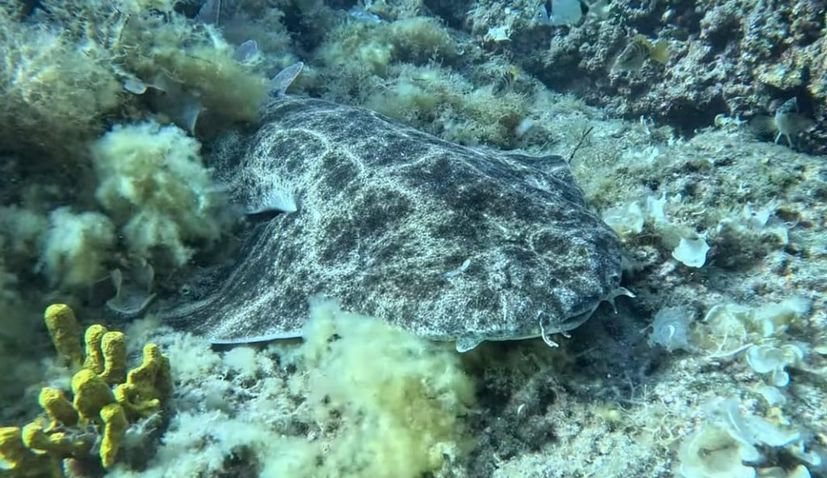From extinction to hope as angel sharks filmed in Croatian waters
- by croatiaweek
- in News

(Screenshot/YouTube/WWF Adria)
The news that fisherman and diver Nikola Kosanović from Molat has captured footage of several angel sharks has resonated strongly among conservationists and marine enthusiasts in Croatia.
This footage is considered one of the most valuable underwater achievements and directly highlights the urgent need to continue protecting this critically endangered species, Jutarnji.hr reported.
Kosanović’s initial recordings of the ‘extinct’ angel shark offer hope for the recovery of this species.
A few years ago, a young, newly born angel shark (Squatina squatina) appeared at the Dolac fish market in Zagreb, surprising both scientists and conservation organisations.
It was believed that this critically endangered species was nearing extinction in the Adriatic Sea. While research spurred by this discovery indicated that angel sharks still inhabit the Adriatic, no live specimen had been filmed in its natural environment—until now.
In 2019, WWF and the Institute of Oceanography and Fisheries launched a study to determine the population of angel sharks in Croatian waters.
The results showed that, from a distribution that once spanned the entire Adriatic, the angel shark population has shrunk to a small area around the Molat archipelago.
“WWF has been working on the research and protection of angel sharks for five years through various projects. The footage captured by our associate Nikola Kosanović confirms that the angel shark truly lives in the Zadar archipelago.
The story of protecting angel sharks in Croatia is gradually becoming synonymous with the fight against the loss of biodiversity in the Adriatic Sea. However, it is not just a story about protecting one marine species; it is also a story about long-term investment in the cultural identity of local communities. Angel sharks were once an integral part of their identity, and we want them to remain so,” says Patrik Krstinić, head of WWF’s marine programme.
The angel shark resembles a ray, burying itself in sandy and muddy bottoms, and hunting from ambush. It can grow over 1.5 metres long. This population represents the last hope for preserving this species, which was once widespread throughout the Mediterranean and eastern Atlantic.
Today, its range is limited to a few smaller areas, including the Zadar archipelago population.
Instead of being caught and sold cheaply, the angel shark could become a recognised brand, bringing significant benefits to the islands of Molat, Silba, and Olib, as well as the entire Zadar County.
The Canary Islands, home to the most vital angel shark population, serve as an example where divers pay substantial sums to see them.
The angel shark is not dangerous to humans, can grow up to 2 metres, and is very elusive, making any footage or photograph a real treat for underwater photography enthusiasts.
It is crucial to emphasise that disturbing this strictly protected species is punishable by law, especially physical contact or obstructing its movement.
